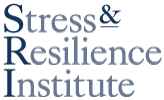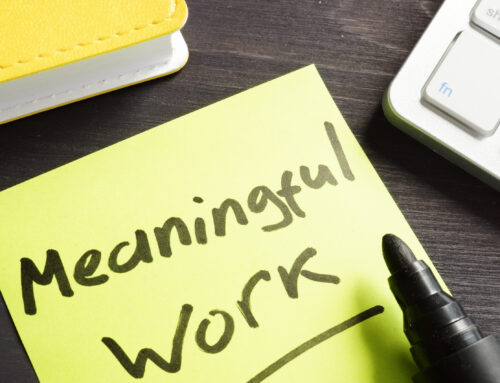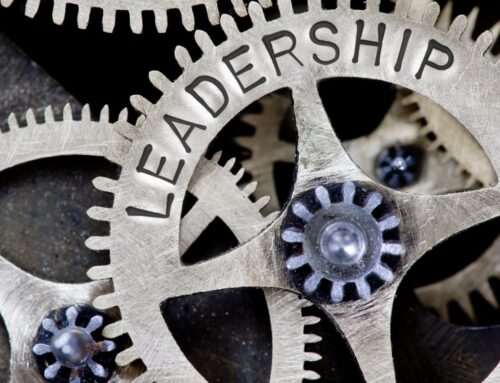Increase your self-efficacy. Self-efficacy is having the belief in your own ability to accomplish (and exercise control over) personally meaningful goals and tasks. People who have a stronger level of perceived self-efficacy experience less stress in challenging situations, and situations in turn become less stressful when people believe they can cope (Bandura, 1989). The most direct and effective way to enhance self-efficacy is through performance mastery experiences. When you accomplish a goal, your brain asks, “Hmmm, what else can I do?” Another way to build self-efficacy is to find a self-efficacy “model.” Simply observing a friend or work colleague accomplish something meaningful is contagious and increases your ability to meet challenges head on (Bandura, 1997).
Identify what you need from your work. Harvard Business Review recently published an article identifying the six virtues of a dream company, as compiled from a list of hundreds of executives. The six virtues are as follows:
- You can be yourself
- You’re told what’s really going on
- Your strengths are magnified
- The company stands for something meaningful
- Your daily work is rewarding
- Stupid rules don’t exist
How does your company rate? While few companies meet all of these criteria, use this list as a starting point to create a more rewarding and engaged workplace.
Have creative outlets. Burnout interferes with your ability to perform well, increases rigid thinking, and decreases your ability to think accurately, flexibly, and creatively (Noworol, et al., 1993). Even if you aren’t able to flex your creative muscles at work, having some type of creative outlet will keep you engaged and motivated.
Take care of yourself. “There’s always something to do,” I can still hear my dad saying to me as I sat relaxing at the end of my shift at his plastic injection molding company. “Here’s a broom.” I find it very hard to just sit and relax because it always feels like there is something to do (and there usually is). When I was a lawyer, lunch often involved wolfing down some food-like substance at my desk while I continued to read contracts and catch up on emails. While my work ethic was outwardly admired, I was not working at a sustainable pace. It’s seductive to think we must always be present, sitting at our desks, in order for our worlds to run right, but our bodies aren’t machines (no matter how much caffeine and sugar you pump in). And really, whatever “it” is (work, chores, homework) will still be there after you take a much-needed break.
Get support where you can find it. The number of people who say they have no one with whom they can discuss important matters has nearly tripled in the past two and a half decades (McPherson et al., 2006). The more I burned out, the more I just wanted to hole up in my office and avoid people, and that was exactly the opposite of what I should have been doing. I didn’t want to let people know how awful I was really feeling because I thought it meant I was weak. It takes time and effort to maintain social connections, but supportive people are the best inoculation against burnout.
Get real and go there. I had to have some tough internal and external conversations when I burned out. I had to figure out why I started getting panic attacks at the age of 14, and why they came back. I had to figure out why I thought it was more impressive to become a lawyer instead of following my heart to become a writer. I had to dig deep to uncover why I was a people pleasing, perfectionist, achieve-aholic. I had to reconnect with my values. Getting real isn’t always pretty (which is probably why you’re avoiding it), but true happiness and burnout prevention depend on it.
Increase your diet of positive emotions. Studies show that increasing your diet of positive emotion builds your resilience, creativity (see #3 above), and ability to be solution-focused, things that are in short supply if you feel like you’re burning out. I made it a point to start noticing when people did things well (and told them so), and I tried to stop being so hard on myself. Aim for a ratio of positive emotions to negative emotions of at least 3:1, which is the tipping point to start experiencing increased resilience and happiness (Fredrickson, 2009).
Justice Oliver Wendell Holmes once said, “Too many people die with their music still in them.” After finding this quote in another article I wrote, one of my readers asked me, “What if the problem is that people are still alive but their music has died?” And that my friends, is what burnout feels like – being alive but feeling like your music has died. My work involves making sure that never happens to you.
_________________________________________________________________________
Connect with Paula on
Twitter,
Facebook, and
LinkedIn.
_________________________________________________________________________
References
Bandura, A. (1989). Human agency in social cognitive theory.
44 American Psychologist, 1175-1184.
Bandura, A. (1997). Self-efficacy. New York: W.H. Freeman and Company.
Fredrickson, B. (2009). Positivity. New York: Crown Publishers.
McPherson, M., Smith-Lovin, L., & Brashears, M.E. (2006). Social isolation in America: Changes in core discussion networks over two decades.
71,
American Sociological Review, 353-375.
Noworol, C. et al. (1993). Impact of professional burnout on creativity and innovation. In
Professional Burnout: Recent Developments in Theory and Research (W.B. Schaufeli, C. Maslach, & T. Marek, Eds.). pp. 163-175. Taylor & Francis.]]>





